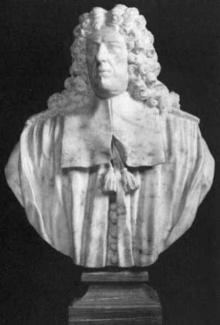Event

We are delighted to welcome Prof. Hans Cools as Visiting Brueghel Professor at Penn for 2019-’20 from the Katholieke Universiteit in Leuven (Belgium)! Prof. Cools, who was a researcher at the European University Institute in Florence and completed his doctorate at the University of Amsterdam, is a distinguished historian of early-modern Europe, with a strong interest for Italy.
His talk is entitled:
"Communities of Strangers. Italian merchants in 17th century Amsterdam"
(see abstract below)
It'll take place in Cherpack at 5:15 on Thursday Oct. 24. We hope to see many of you at this event.
***
ABSTRACT
Ever since Genoese galleys had made their appearance at Bruges in the last quarter of the 13th century, communities of Italian long distance traders had been residing in the Low Countries. In the 16th century, most of them lived in Antwerp, then the commercial metropolis of the Low Countries. However, by the end of that century political and religious turmoil and climatological and demographic transformations had radically altered the trade patterns between the two regions. In 1585, Dutch rebels closed off Antwerp’s access to the sea. Moreover, large parts of Italy became dependent upon the import of grains from the North. Therefore, by the 1590s many Italian merchants had left Antwerp. Subsequently, some of them, mostly Protestant Lucchese bankers, established themselves in Amsterdam.
In the final phases of the Thirty Years war a second wave of Italian migrants joined them. These new migrants mostly stemmed from humbler backgrounds. Moreover, they originated from provincial towns and not from commercial hubs such as Venice or Florence. Silvio Tensini, from Crema in Lombardy and his son in law Francesco Feroni, from Empoli in Tuscany were examples in point. In this lecture, I shall highlight the career of the latter.
Originally, Feroni concentrated on the import of Baltic grains to Italy, for which he established a network that stretched from Archangel in Russia, over Hamburg and Amsterdam to ports along the Tyrrhenian coast, such as Genoa, Livorno or Civitavecchia. Subsequently, he diversified his business and he started to import Spanish wools to the Netherlands and to export Dutch books, scientific instruments and works of art to Italy. Finally, he engaged in the triangular trade across the Atlantic in slaves and sugar. Moreover, Feroni acted as an information broker and an officious representative of the Medici Grand Dukes in the Dutch Republic. Within two decades, he became one of Amsterdam’s wealthiest merchants.
In contrast to the first wave of immigrants, Feroni and his peers remained staunch Catholics. Thanks to his Roman contacts, he became an influential figure in the local Catholic minority community and he advocated its interests with the Protestant urban magistrate. Although it seems that Feroni never learnt Dutch, he thus was relatively well integrated.
From the 1660s onward, a third wave of Italian migration followed suit. In response to the aggressive policies of King Louis XIV, Florentine bankers and merchants gradually withdrew from Paris and settled in Amsterdam. They stimulated a new increase both in the maritime and in the overland trade between the Dutch Republic and various Italian states. However, from the 1670s until the early 18th century, the Dutch economy entered a phase of stagnation and by then Amsterdam attracted less foreign merchants. In the 18th century, most Italian immigrants to the Dutch Republic would be artisans instead of merchants.
Francesco Feroni’s extra-ordinary career testifies from the dynamic character of the Italian trade during an age in which the economy of the peninsula stagnated. His activities fit into a broader pattern and therefore it is worthwhile to analyze them.
